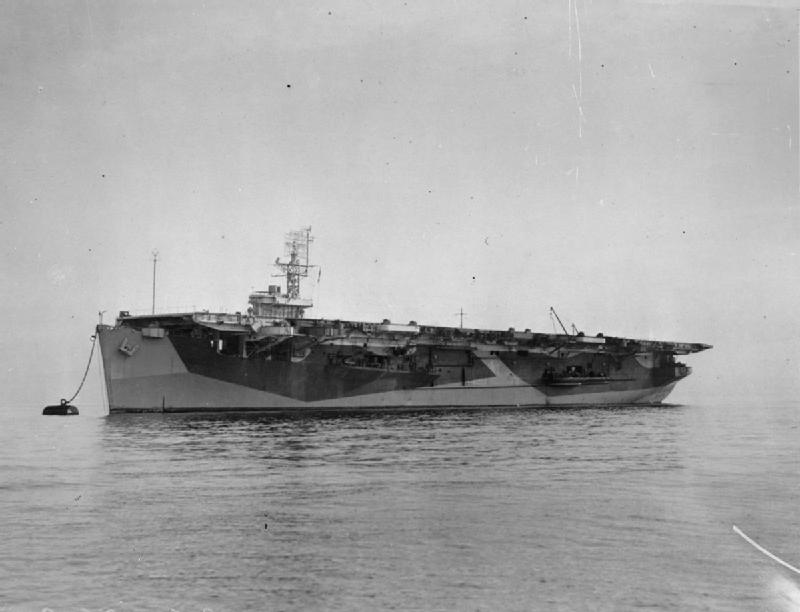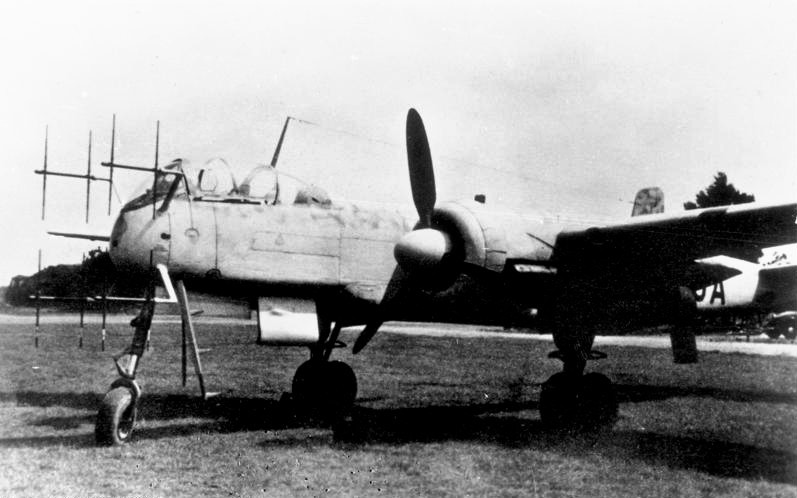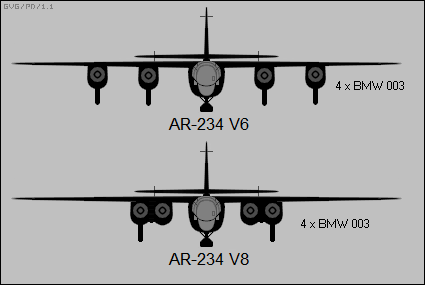|
HMS Reaper (D82)
USS ''Winjah'' (CVE-54) (originally AVG-54, later ACV-54), was a of the United States Navy, leased to the Royal Navy during World War II. ''Winjah'' was laid down on 5 June 1943 at Tacoma, Washington, by Seattle-Tacoma Shipbuilding. She was assigned to the United Kingdom under lend-lease on 23 June; she was redesignated CVE-54 on 15 July; launched on 22 November; and delivered to the British on 18 February 1944. From March to August 1945 she was part of the British Pacific Fleet attached to the 30th Aircraft Carrier Squadron. Renamed HMS ''Reaper'' (D82), the carrier operated in the Royal Navy for the duration of World War II. After arriving at Norfolk, Virginia, on 13 May 1946, ''Reaper'' was decommissioned on 20 May and returned to the United States Government. Authorized for disposal on 14 June, ''Winjah'' was struck from the Navy Registry on 8 July and sold to the Waterman Steamship Company of Mobile, Alabama, on 12 February 1947 as ''South Africa Star''. She was scrap ... [...More Info...] [...Related Items...] OR: [Wikipedia] [Google] [Baidu] |
30th Aircraft Carrier Squadron
The 30th Aircraft Carrier Squadron also called Thirtieth Aircraft Carrier Squadron was a military formation of Escort Aircraft Carriers of the Royal Navy that was part of the British Pacific Fleet from January to August 1945. History The 30th Aircraft Carrier Squadron was established in January 1945 with Commodore William. P. Carne taking command in March 1945. the 30th Aircraft Carrier Squadron (30 ACS), consisted of nine escort carriers and was solely assigned to the British Pacific Fleet The British Pacific Fleet (BPF) was a Royal Navy formation that saw action against Japan during the Second World War. The fleet was composed of empire naval vessels. The BPF formally came into being on 22 November 1944 from the remaining ships o .... From March to April 1945 it was the fleets Air Train. Administration Commodore, Commanding, 30th Aircraft Carrier Squadron Included: Composition Included: : 30th Aircraft Carrier Squadron; British Pacific Fleet January to August 1945 Re ... [...More Info...] [...Related Items...] OR: [Wikipedia] [Google] [Baidu] |
Horsepower
Horsepower (hp) is a unit of measurement of power, or the rate at which work is done, usually in reference to the output of engines or motors. There are many different standards and types of horsepower. Two common definitions used today are the mechanical horsepower (or imperial horsepower), which is about 745.7 watts, and the metric horsepower, which is approximately 735.5 watts. The term was adopted in the late 18th century by Scottish engineer James Watt to compare the output of steam engines with the power of draft horses. It was later expanded to include the output power of other types of piston engines, as well as turbines, electric motors and other machinery. The definition of the unit varied among geographical regions. Most countries now use the SI unit watt for measurement of power. With the implementation of the EU Directive 80/181/EEC on 1 January 2010, the use of horsepower in the EU is permitted only as a supplementary unit. History The development of the ... [...More Info...] [...Related Items...] OR: [Wikipedia] [Google] [Baidu] |
Beam (nautical)
The beam of a ship is its width at its widest point. The maximum beam (BMAX) is the distance between planes passing through the outer extremities of the ship, beam of the hull (BH) only includes permanently fixed parts of the hull Hull may refer to: Structures * Chassis, of an armored fighting vehicle * Fuselage, of an aircraft * Hull (botany), the outer covering of seeds * Hull (watercraft), the body or frame of a ship * Submarine hull Mathematics * Affine hull, in affi ..., and beam at waterline (BWL) is the maximum width where the hull intersects the surface of the water. Generally speaking, the wider the beam of a ship (or boat), the more initial stability it has, at the expense of secondary stability in the event of a capsize, where more energy is required to right the vessel from its inverted position. A ship that heels on her ''beam ends'' has her deck beams nearly vertical. Typical values Typical length-to-beam ratios ( aspect ratios) for small sailboats are fro ... [...More Info...] [...Related Items...] OR: [Wikipedia] [Google] [Baidu] |
Length Overall
__NOTOC__ Length overall (LOA, o/a, o.a. or oa) is the maximum length of a vessel's hull measured parallel to the waterline. This length is important while docking the ship. It is the most commonly used way of expressing the size of a ship, and is also used for calculating the cost of a marina berth (for example, £2.50 per metre LOA). LOA is usually measured on the hull alone. For sailing ships, this may ''exclude'' the bowsprit and other fittings added to the hull. This is how some racing boats and tall ships use the term LOA. However, other sources may include bowsprits in LOA. Confusingly, LOA has different meanings. "Sparred length", "Total length including bowsprit", "Mooring length" and "LOA including bowsprit" are other expressions that might indicate the full length of a sailing ship. LOD Often used to distinguish between the length of a vessel including projections (e.g. bow sprits, etc.) from the length of the hull itself, the Length on Deck or LOD is often repo ... [...More Info...] [...Related Items...] OR: [Wikipedia] [Google] [Baidu] |
Merchant Ship
A merchant ship, merchant vessel, trading vessel, or merchantman is a watercraft that transports cargo or carries passengers for hire. This is in contrast to pleasure craft, which are used for personal recreation, and naval ships, which are used for military purposes. They come in myriad sizes and shapes, from inflatable dive boats in Hawaii, to 5,000-passenger casino vessels on the Mississippi River, to tugboats plying New York Harbor, to oil tankers and container ships at major ports, to passenger-carrying submarines in the Caribbean. Many merchant ships operate under a " flag of convenience" from a country other than the home of the vessel's owners, such as Liberia and Panama, which have more favorable maritime laws than other countries. The Greek merchant marine is the largest in the world. Today, the Greek fleet accounts for some 16 per cent of the world's tonnage; this makes it currently the largest single international merchant fleet in the world, albeit no ... [...More Info...] [...Related Items...] OR: [Wikipedia] [Google] [Baidu] |
Querqueville Airfield
Querqueville Airfield is a former airfield north-northwest of Querqueville in the Normandy region of France. History The airfield was already in use before World War II and served as a training and research airfield for the Aeronavale. It was captured by the Germans after the Battle of France in May 1940, and was taken over by the Luftwaffe and became a German Fliegerhorst. Fliegerhorst Querqueville was used by Jagdgeschwader 2 (JG 2) "Richthofen" during the Battle of Britain. It operated g Bf 109Es over the South Coast of England and the English Channel The English Channel, "The Sleeve"; nrf, la Maunche, "The Sleeve" ( Cotentinais) or ( Jèrriais), ( Guernésiais), "The Channel"; br, Mor Breizh, "Sea of Brittany"; cy, Môr Udd, "Lord's Sea"; kw, Mor Bretannek, "British Sea"; nl, Het Ka .... Between 1940 and 1944 it was attacked several times by both the RAF and USAAF. Several French Potez 631 twin-engined fighters were captured by the Germans at the airfield, and w ... [...More Info...] [...Related Items...] OR: [Wikipedia] [Google] [Baidu] |
Heinkel He 219
The Heinkel He 219 ''Uhu'' ("Eagle-Owl") is a night fighter that served with the German Luftwaffe in the later stages of World War II. A relatively sophisticated design, the He 219 possessed a variety of innovations, including Lichtenstein SN-2 advanced VHF-band intercept radar, also used on the Ju 88G and Bf 110G night fighters. It was also the first operational military aircraft to be equipped with ejection seats and the first operational German World War II-era aircraft with tricycle landing gear. Had the ''Uhu'' been available in quantity, it might have had a significant effect on the strategic night bombing offensive of the Royal Air Force; however, only 294 of all models were built by the end of the war and these saw only limited service.Boyne 1997, p. 330. Ernst-Wilhelm Modrow was the leading night fighter ace on the He 219. Modrow was credited with 33 of his 34 night air victories on the type. Design and development Development and production of the He 219 was prot ... [...More Info...] [...Related Items...] OR: [Wikipedia] [Google] [Baidu] |
Arado Ar 234
The Arado Ar 234 ''Blitz'' (English: lightning) is a jet-powered bomber designed and produced by the German aircraft manufacturer Arado. It was the world's first operational turbojet-powered bomber, seeing service during the latter half of the Second World War. Development of the Ar 234 can be traced back to the latter half of 1940 and the request to tender from the Ministry of Aviation to produce a jet-powered high-speed reconnaissance aircraft. Arado was the only respondent with their ''E.370'' design. While its range was beneath that of the Ministry's specification, an initial order for two prototypes was promptly issued to the company, designated ''Ar 234''. While both of the prototypes had been mostly completed prior to the end of 1941, the Junkers Jumo 004 turbojet engines were not available prior to February 1943. Due to engine unreliability, the maiden flight of the Ar 234 V1 was delayed until 30 July 1943. In addition to the original reconnaissance-orientated ''Ar 234 ... [...More Info...] [...Related Items...] OR: [Wikipedia] [Google] [Baidu] |
Operation Lusty
Operation LUSTY (LUftwaffe Secret TechnologY) was the United States Army Air Forces' effort to capture and evaluate German aeronautical technology during and after World War II. Overview During World War II, the U.S. Army Air Forces Intelligence Service sent teams to Europe to gain access to enemy aircraft, technical and scientific reports, research facilities, and weapons for study in the United States. The Air Technical Intelligence (ATI) teams, trained at the Technical Intelligence School at Wright-Patterson AFB, Wright Field, Ohio, collected enemy equipment to learn about Germany's technical developments. The ATI teams competed with 32 allied technical intelligence groups to gain information and equipment recovered from crash sites. As the war concluded, the various intelligence teams, including the ATI, shifted from tactical intelligence to post hostilities investigations. Exploitation intelligence increased dramatically. On 22 April 1945, the USAAF combined technical and p ... [...More Info...] [...Related Items...] OR: [Wikipedia] [Google] [Baidu] |
Cherbourg Harbour
Cherbourg Harbour (French: ''rade de Cherbourg''; literally, the "roadstead of Cherbourg"), is a harbour situated at the northern end of the Cotentin Peninsula, on the English Channel coastline, in Normandy, northwestern France. With a surface area of 1,500 hectares, it is the second largest artificial harbour in the world, after the 4,500 hectare Ras Laffan Harbour in Qatar. As well as Cherbourg Naval Base, it has been used for mercantile shipping. It was begun in 1783, with its central harbour breakwater completed in 1853 – this was 3.64 km long, an average of 100 m wide at its base and an average of 12 m wide at its top, and sited 4 km from the coast. Three forts were added to its central wall in 1860. This and the two other breakwaters stretch for more than 6 km. The eastern opening into the harbour is 950 m wide and the western one 2.3 km wide. The harbour's maximum depth is 13 m at low tide. History Cherbourg had been a strategic stronghold for se ... [...More Info...] [...Related Items...] OR: [Wikipedia] [Google] [Baidu] |
Mobile, Alabama
Mobile ( , ) is a city and the county seat of Mobile County, Alabama, United States. The population within the city limits was 187,041 at the 2020 United States census, 2020 census, down from 195,111 at the 2010 United States census, 2010 census. It is the fourth-most-populous city in Alabama, after Huntsville, Alabama, Huntsville, Birmingham, Alabama, Birmingham, and Montgomery, Alabama, Montgomery. Alabama's only saltwater port, Mobile is located on the Mobile River at the head of Mobile Bay on the north-central Gulf Coast. The Port of Mobile has always played a key role in the economic health of the city, beginning with the settlement as an important trading center between the French colonization of the Americas, French colonists and Native Americans in the United States, Native Americans, down to its current role as the 12th-largest port in the United States.Drechsel, Emanuel. ''Mobilian Jargon: Linguistic and Sociohistorical Aspects of a Native American Pidgin''. New York: ... [...More Info...] [...Related Items...] OR: [Wikipedia] [Google] [Baidu] |


.jpg)

